12 min read
Beyond Traditional Loans: 14 Creative Financing Options for Real Estate Investing
Creative financing can offer real estate investors options beyond traditional lending from banks. If you have less-than-ideal credit or lack a sizeable...
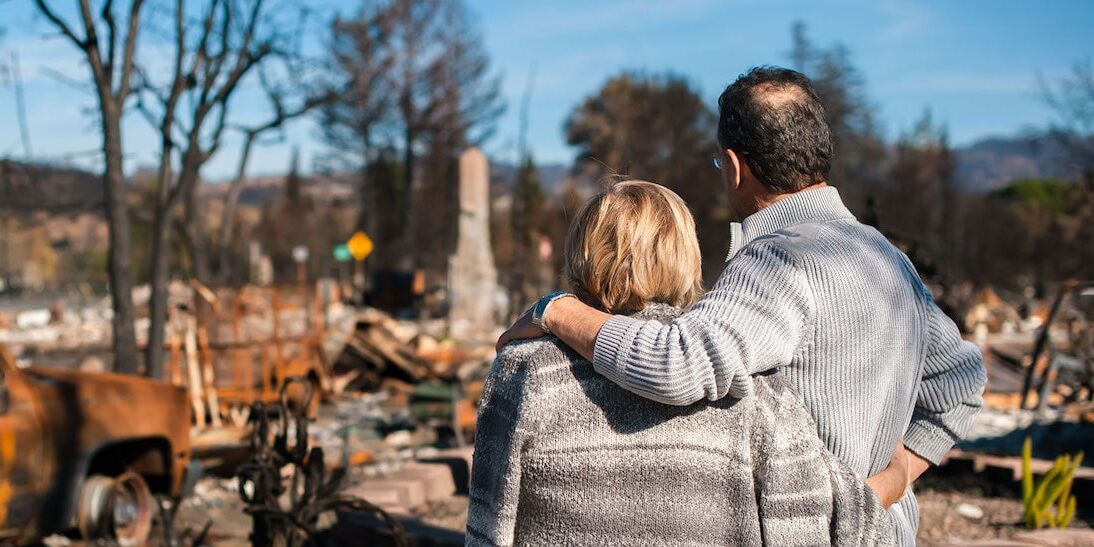
Natural disasters, such as hurricanes and earthquakes, cause billions of dollars in damage in globally each year. According to a report from Aon, natural disasters cost the global economy $32 billion, of which only $14 billion was insured, in the first quarter of 2022 alone. Whether you or a loved one has been impacted by a natural disaster, you’re familiar with the devastating financial and emotional toll they can have.
From hurricane safety to protecting your property from wildfires, we’ve compiled an emergency preparedness guide with everything a landlord needs to know before and after a natural disaster strikes. We’ve also explained how landlord insurance can protect both your investment property and your peace of mind below.
Marketing. Applications. Leases. Payments.
Marketing. Applications. Leases. Payments.
The best time to insure your property was yesterday; the second best time is today. Don’t wait until disaster strikes to evaluate your options — by then, it’ll be too late.
Your rental properties are best protected when you enroll in a comprehensive landlord insurance policy. Exactly what it sounds like, landlord insurance offers three key protections:
If you don’t have landlord insurance or want to ensure you’re fully covered, check out Steadily. Natural disasters are inevitable, but financial ruin doesn’t have to be. Stress less by keeping your policy up to date and knowing that you’ll be in good hands should disaster strike.
Ready to learn more about disaster preparedness to further keep yourself, your tenants, and your property safe? Jump to:
While some natural disasters can strike suddenly with little to no warning, such as an earthquake, other disasters are predicted well before their arrival. In the case of hurricanes, for example, modern technology and science typically empower residents to prepare before the storm hits.
If you own a rental property in the path of a natural disaster, take note of the following disaster-specific instructions and preparation tips.
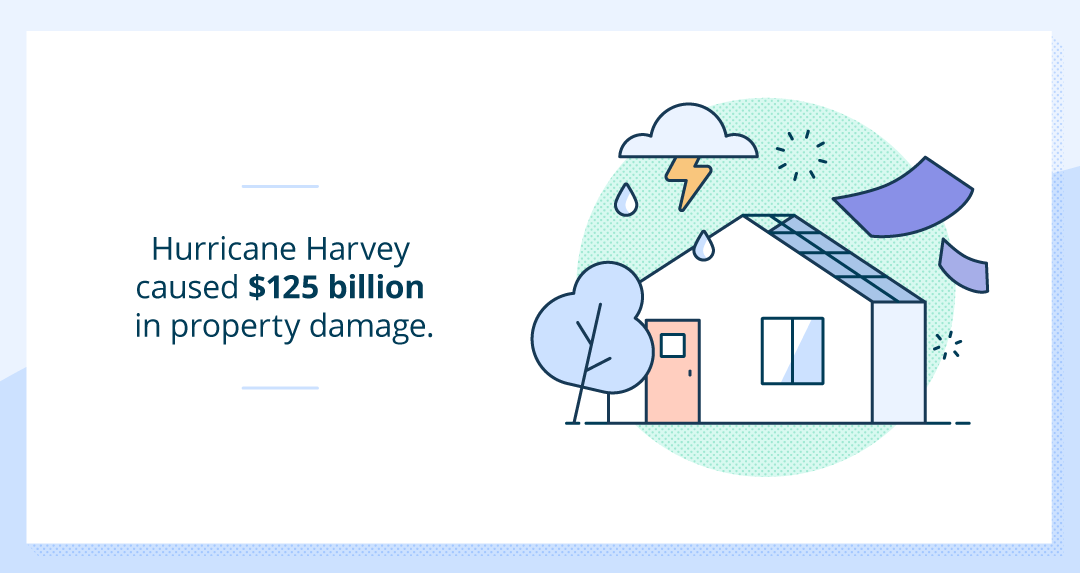
Hurricanes, also known as tropical cyclones, are powerful storms that affect a large portion of the United States and can cause massive damage to properties and communities. According to the National Hurricane Center, Hurricane Harvey caused approximately $125 billion in damages in 2017, making it the second most expensive hurricane to hit the mainland U.S. since 1900. (2005’s Hurricane Katrina takes the top spot, causing $170 billion in damages.)
These natural disasters can last from a couple of days to weeks at a time. On average, hurricane season starts June 1 and lasts until November 30, but that timeframe varies for each region of the country.
Regions most affected:
The severity of hurricanes is indicated by a categorical wind scale, also known as the Saffir-Simpson Hurricane scale, which was developed by meteorologist Bob Simpson and wind engineer Herb Saffir. This scale has five categories and estimates different levels of property damage:
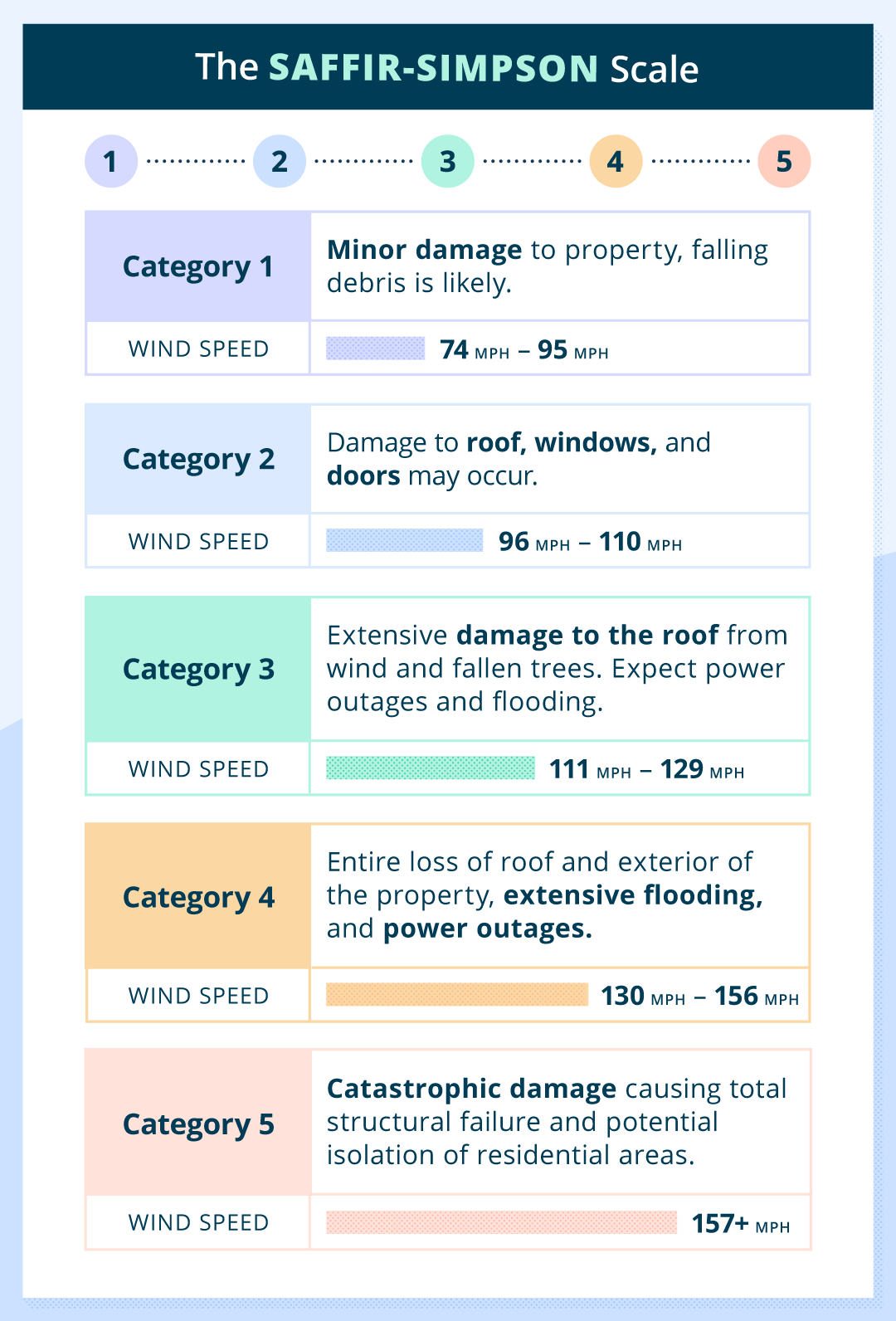
As a landlord, there’s only so much you can do to prepare your tenants for a hurricane or tropical storm. While ultimately they must take responsibility for their own safety, you can provide them with instructions on how to best prepare themselves and their rental home. You can also provide the materials needed to protect a home during hurricanes if you own properties in a hurricane-prone area. Here are some tips to help you and your tenants stay safe:
As a storm approaches, knowing what to do in the event of a hurricane is important in staying safe. If you have not evacuated from the area, here are a few safety tips for both landlords and tenants to follow:
Hurricanes are not the only natural disaster that causes destruction across the nation each year. According to the National Fire Protection Association, “major fires in the California wildland/urban interface (WUI) caused $4.2 billion in direct property damage in 2020 alone. Wildfires can happen anywhere at any time, spread quickly, and occur especially in areas that have consistent dry seasons. Unfortunately, humans can also contribute to these disasters.
Regions most affected:
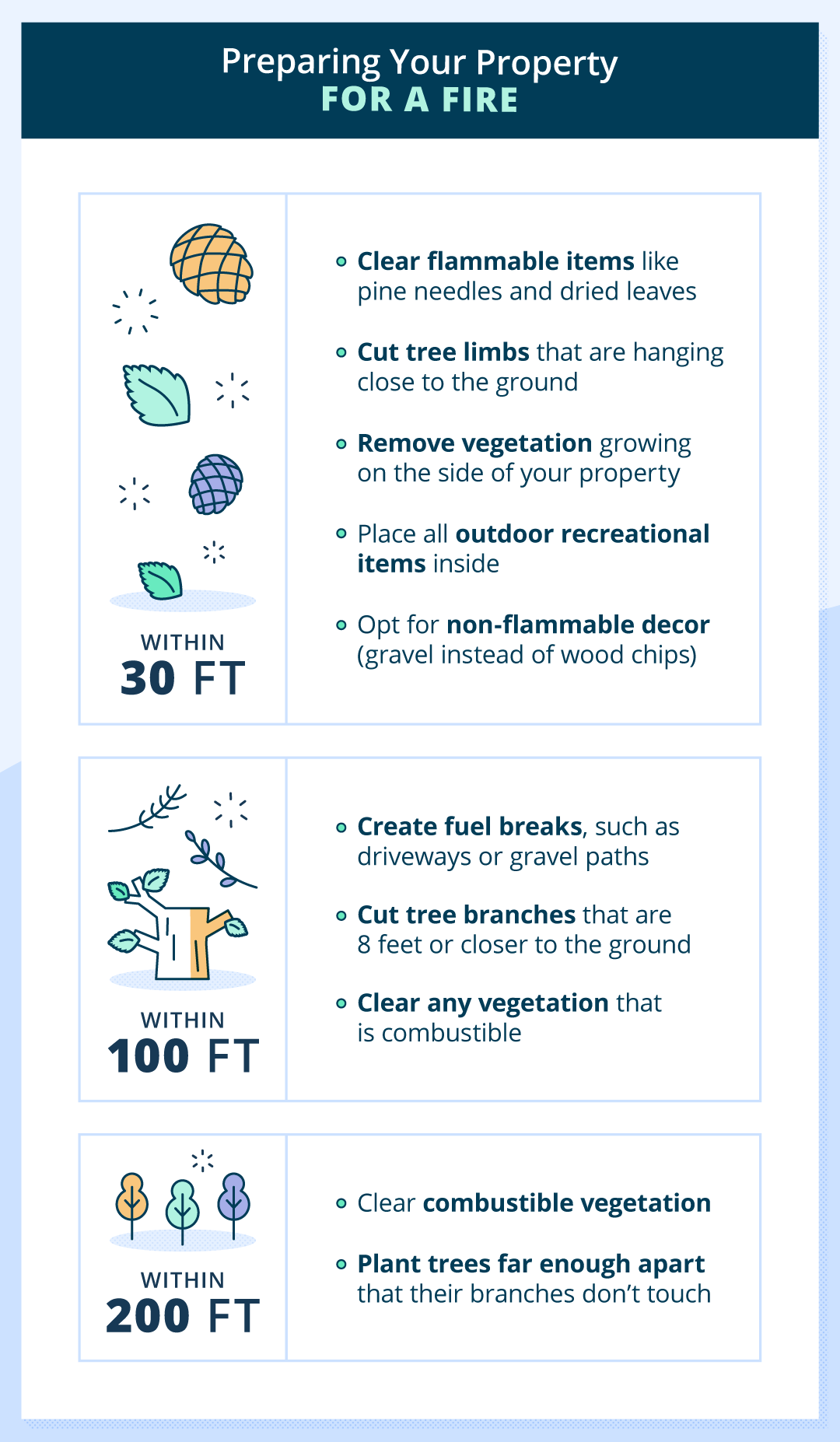
If a wildfire is spreading in an area where your rental properties are located, you should:
In the event of an unexpected fire, here are some safety tips that both landlords and renters should follow to ensure maximum safety:
As cold weather approaches, precipitation in severely low temperatures can cause significant amounts of snow and sleet. These natural disasters occur when winds are 35 MPH or higher, last for three hours or longer, and have the potential to cause damage to properties, such as burst pipes from frozen water or collapsed roofs from accumulated snow. In 2021, winter storms in the U.S. caused a whopping $15 billion in insured losses.
Freezing rain, ice, and snowfall tend to strike from early autumn to late spring. These winter storms or blizzards are the most common in the upper Midwest and the Great Plains but can strike in most areas of the country (with the exception of the Gulf Coast and California coast).
Regions most affected:
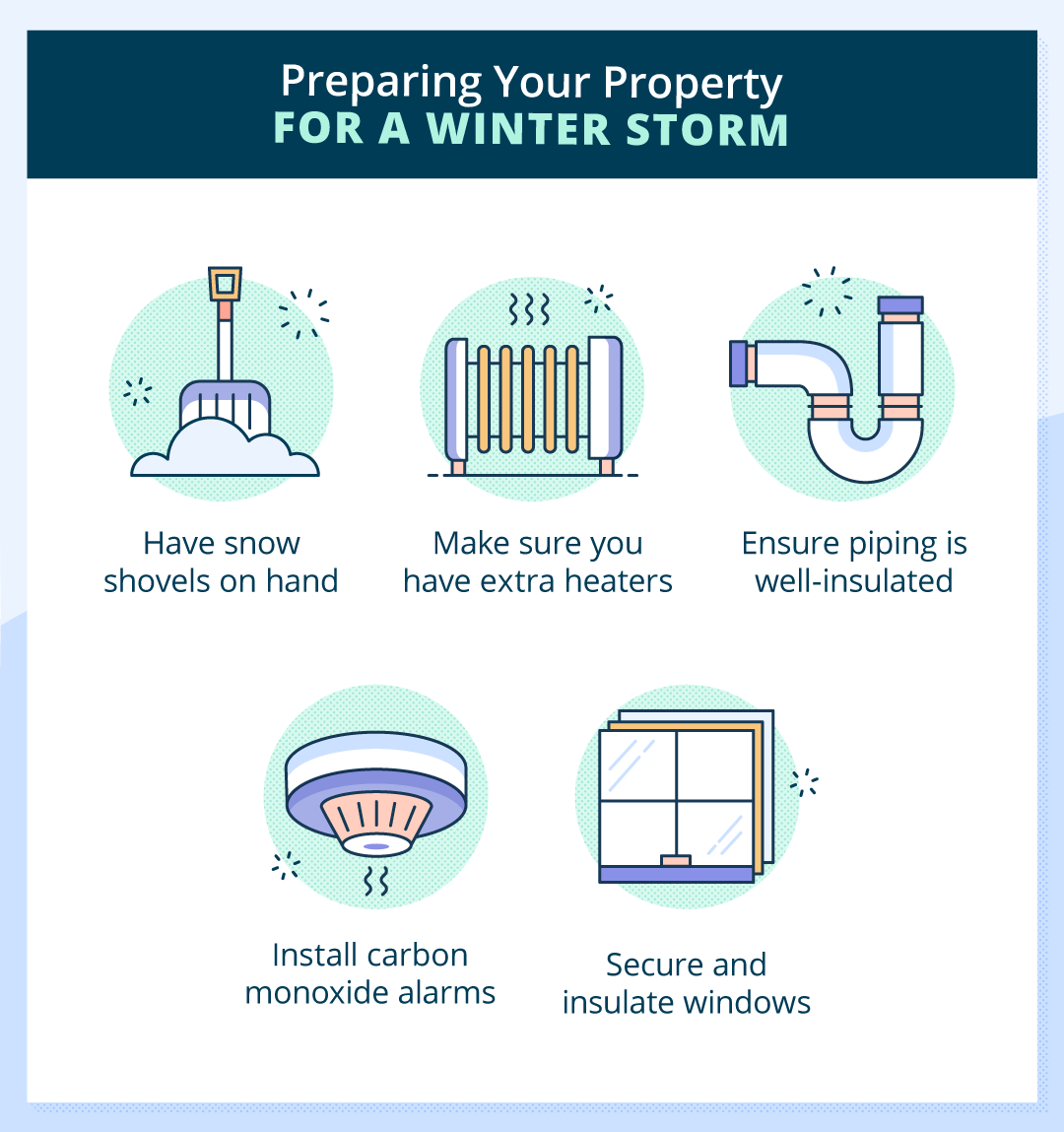
Winter storms and blizzards can damage your property if you’re not prepared properly. Here are some helpful ways to prepare your property before a winter storm approaches as a landlord:
Be sure you know the difference between winter storm watches and warnings. A winter storm watch means a winter storm is possible in your area. A winter storm warning means a winter storm is occurring or is about to occur in your area. In the event of a winter storm, there are precautions landlords and tenants should consider to stay safe:
Looking to prepare your rental property for winter? into our detailed blog post and accompanying video guide on essential winterization techniques tailored for landlords.
Landslides can occur with little to no warning at all; all it takes is a significant amount of materials, such as rock, mud, and other debris, to begin moving down a slope. These natural disasters usually follow fires, earthquakes, or heavy storms. Landslides can travel at a rate of up to 35 MPH, destroying everything in their path. Every year, landslides in the United States cause between $2-$4 billion in damages.
Luckily, scientists have developed slope stability models to predict and analyze local risk for landslides. Regions along the Appalachian Mountains, Rocky Mountains, and Pacific Coastal Ranges are most likely to be affected by this type of disaster.
Regions most affected:
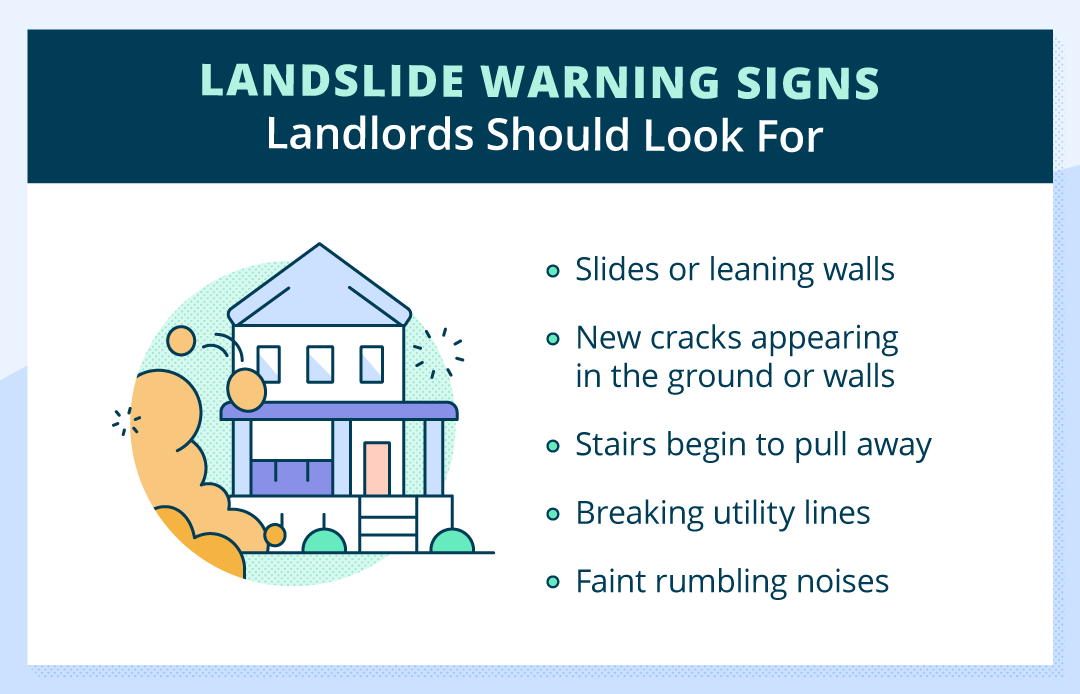
If your property is located in an area where landslides are common, take these preventative measures into account to minimize damage to your property:
Although landslides occur with little to no warning, here are some tips on what to do if you or your tenants experience a landslide:
An earthquake is a rapid shaking of the ground suddenly caused by the shifting of plates of rock beneath the surface of the earth. These natural disasters can kick off tsunamis, fires, avalanches, and landslides. While they can happen anywhere without warning, there are certain areas that are more likely to be affected by earthquakes, such as the West Coast.
Regions most affected:
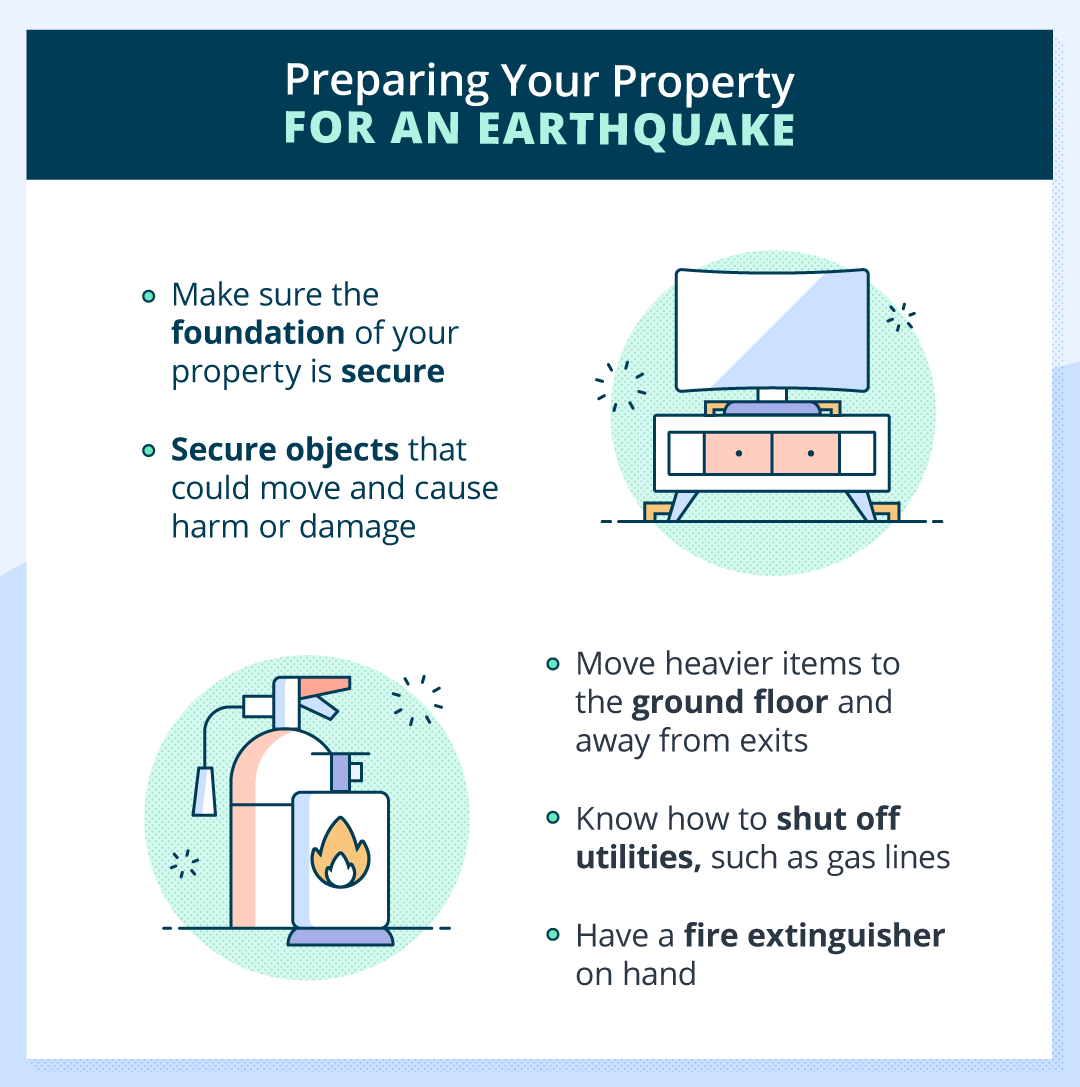
If you’re located in an area that is prone to earthquakes, follow these tips to secure your property:
To stay safe during an earthquake, follow the tips below:
If your tenants live in an area that is under evacuation during a natural disaster, check in with them and urge them to obey evacuation orders. Remind tenants with pets that they should bring along all animals during an evacuation. The Pets Evacuation and Transportation Standards Act (PETS) requires accommodation for pets during an evacuation. Remind tenants that due to this act, their pets will be allowed in designated shelters and on evacuation transit.
After a natural disaster has passed through the area your rental properties are located in, it is time to start assessing the damages and taking the next steps. Remember, these damages will differ from normal wear and tear. Post-disaster, you will need to make decisions about your property, insurance claims, and what to do with tenants who have evacuated, are late on rent, or return to uninhabitable homes.
If a natural disaster damaged your rental property to the point that it is deemed uninhabitable, most states will follow similar regulations as outlined in the Uniform Landlord Tenant Act (URLTA). This act states that in the case of disasters, “If the dwelling unit or premises are damaged or destroyed by fire or casualty to an extent that enjoyment of the dwelling unit is substantially impaired, the tenant may:
OR
Essentially, this act states the lease is voided when the property becomes uninhabitable in the states that have adopted this act or similar laws. Some states used this act as a jumping-off point and created slightly different versions of these laws.
Be sure to check in with your specific state’s regulations for more details. Because laws and regulations can vary greatly from state to state, it’s best to consult a local attorney to determine the best course of action in the case of an uninhabitable home.
If your rental properties are still habitable, you may still face unique circumstances with your tenants. Lost time from work due to evacuations and other distress may leave tenants who live paycheck to paycheck struggling to pay their rent. Here are some of the responsibilities you face as a landlord in these situations:
After a natural disaster, you’ll want to begin the process of filing insurance claims. How much assistance you will receive through your insurance will vary greatly depending on your landlord insurance policy. It’s best to require tenants to carry their own renters insurance, as their policy will not only protect their belongings and losses, but in some cases, it can also help you cover deductibles.
Unfortunately, the process for filing claims can be extremely slow in the case of major disasters. With so many claims flooding the system, patience will be key. The better documentation you keep upfront, the better chance you’ll have of receiving fair compensation for damages.
No matter what natural disaster you find yourself faced with, there are plenty of government and non-profit resources that can help you if you’re in need. Here is a helpful list of resources for both landlords and renters:
Additionally, you can help your tenants prepare for a natural disaster with this supply kit checklist that includes everything they’ll need, from important documents to first aid items.
A natural disaster can leave both landlords and tenants wondering what comes next. As a landlord, ensuring your property is well-equipped to withstand these natural disasters will make rental applicants more comfortable. Plus, these tips and resources will help guide you after a natural disaster strikes.
Remember, always consult an attorney when in doubt and try to work with your tenants as much as possible during trying times. Visit our tenant screening services to help find the perfect renters for your property.
DISCLAIMER: TurboTenant, Inc. does not provide legal advice. This material has been prepared for informational purposes only. All users are advised to check all applicable local, state and federal laws and consult legal counsel should questions arise.
12 min read
Creative financing can offer real estate investors options beyond traditional lending from banks. If you have less-than-ideal credit or lack a sizeable...
11 min read
If you came here wondering how to write a lease agreement, look no further. Creating iron-clad rental contracts is essential for protecting the rights...
10 min read
Between the risks of running a business, a volatile and ever-changing real estate market, and the sometimes fickle attitudes of the renting...
Join the 700,000+ independent landlords who rely on TurboTenant to create welcoming rental experiences.
No tricks or trials to worry about. So what’s the harm? Try it today!
TurboTenant, Inc., © 2025
Created in Sunny Colorado